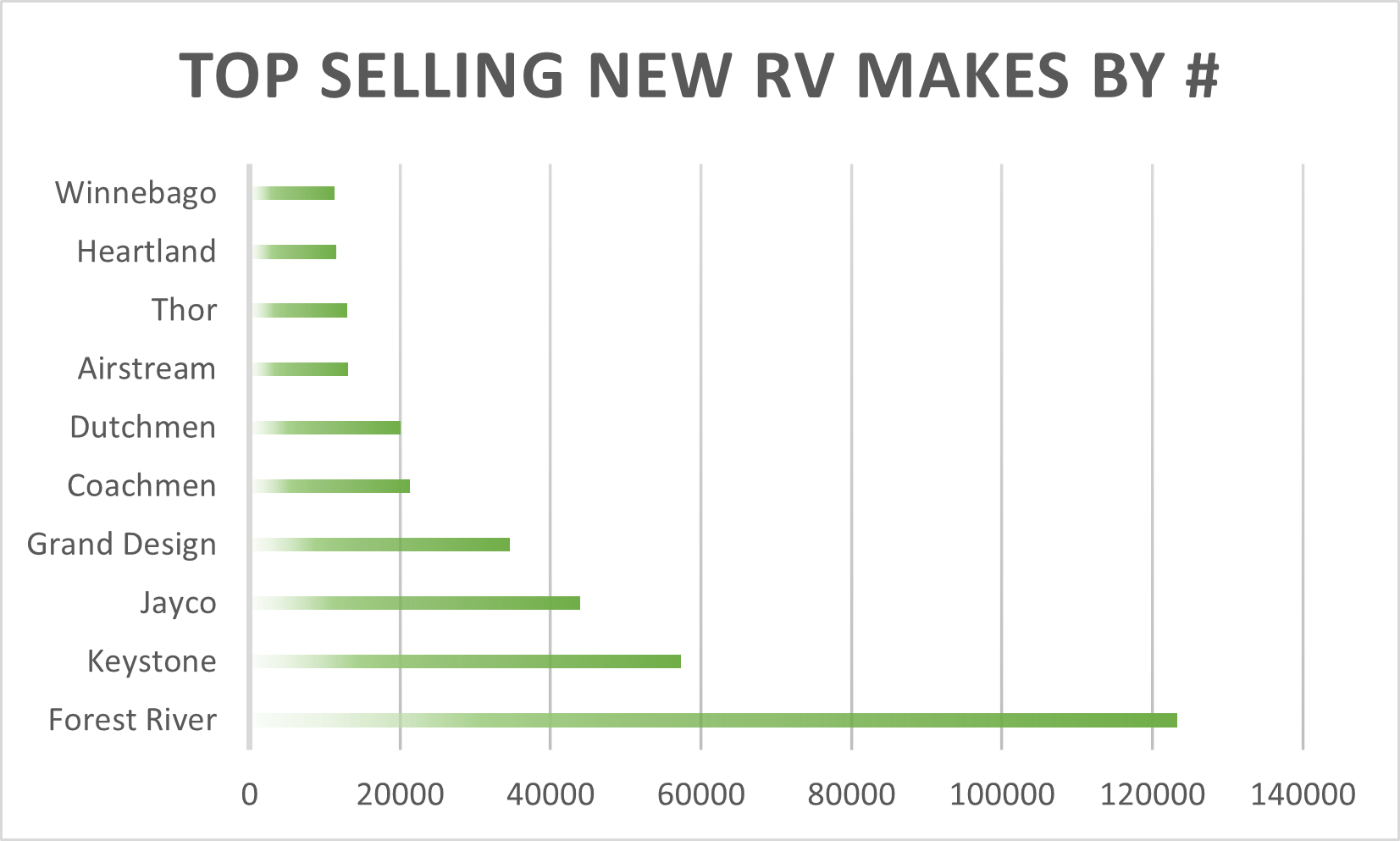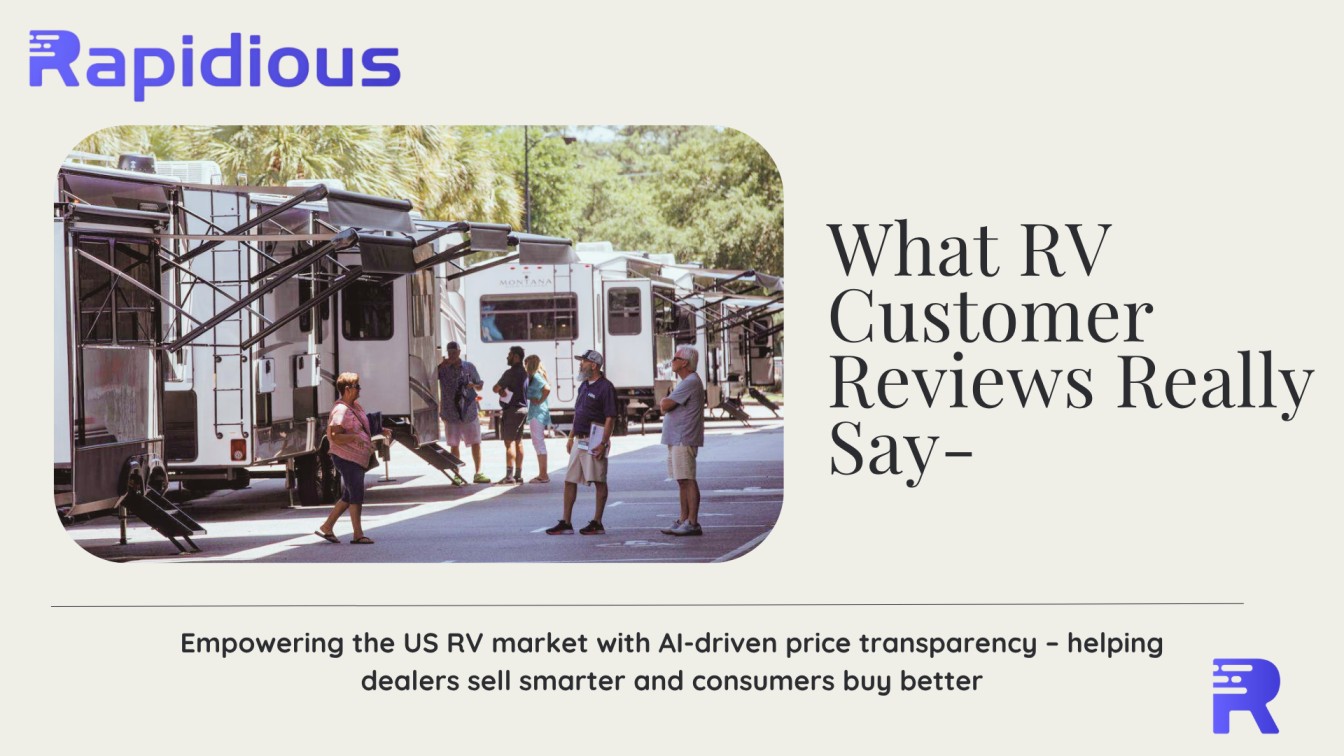How Smart RV Inventory Decisions Drive Dealer Profitability
Industry Insights for U.S. RV Dealers & Inventory Managers
Are You Stocking the RV Brands Buyers Actually Want?
In today’s competitive U.S. recreational vehicle (RV) market, guesswork is no longer a strategy. With changing consumer demand, rising floorplan costs, and tighter profit margins, data-driven RV inventory planning is essential for dealership success.
Based on nationwide RV sales data from January 2024 to April 2025, this report highlights the top 10 best-selling RV brands in the U.S., ranked by units sold, not just brand awareness or marketing buzz.
Understanding which RV manufacturers are seeing the highest retail sales volume helps U.S. RV dealers to align their inventory, pricing, and promotions with real market demand.
Top 10 RV Brands by Units Sold (Jan 2024–Apr 2025)

Key Takeaways for U.S. Dealerships
1. Forest River Leads the Market by a Wide Margin
With over 123,000 units sold during this period, Forest River dominates U.S. RV sales, accounting for nearly one-third of all new RV sales among the top 10 brands.
If you stock Forest River RVs, you’re aligned with a major segment of national demand. But be cautious—high sales volume often correlates with thinner margins, especially when competing with multiple dealerships carrying the same models.
Dealer Tip: Use real-time pricing intelligence to monitor local Forest River competition. Tools that compare MSRP vs. actual retail pricing can help optimize discount timing and avoid profit erosion.
2. Keystone, Jayco & Grand Design Form the Mid-Tier Power Block
Together, these three manufacturers account for over 135,000 new RV sales—a strong showing across entry-level towables and mid-size motorhomes. Their nationwide appeal makes them reliable choices for inventory turnover.
If your dealership is underperforming in any of these brands, it could point to:
- Limited trim-level selection on your lot
- Pricing misalignment with regional competitors
- Weak merchandising or online visibility
Inventory Planning Insight: These mid-volume brands offer strong sell-through rates even as the market transitions into fall. Plan ahead to maintain balanced inventory coverage through Q3 and Q4.
3. Niche RV Brands Still Deliver Regional Strength
The remaining brands in the top 10—Dutchmen, Airstream, Thor, Heartland, and Winnebago—reflect targeted buyer segments and strong regional loyalty. These brands often resonate with:
- Lifestyle-oriented buyers (Airstream)
- Outdoor adventure seekers (Heartland, Winnebago)
- Long-distance travelers and families (Dutchmen, Thor)
Regional Strategy Tip: In outdoor-heavy states like Colorado, Utah, Arizona, and Oregon, niche RV brands may outperform national averages. Align promotions with regional events and lifestyle marketing to capture buyer intent.
Disclaimer: The data presented is sourced from publicly available web listings and may contain occasional inaccuracies; please exercise discretion in interpretation and use.
Strategic Recommendations for RV Dealerships
1. Prioritize Fast-Turn Brands, But Watch Inventory Aging
- Focus floor planning on Forest River and Keystone, but avoid overstocking slow-moving trims.
- Use RV inventory management tools to monitor days-on-lot and discount triggers.
2. Leverage Mid-Tier Brands for Balanced Profitability
- Brands like Grand Design and Jayco offer consistent demand and healthier margins.
- Keep these brands well-represented across entry and mid-price tiers.
3. Use Localized Sales Data to Drive Smarter Stocking
- National sales volume ≠ local performance.
- Validate choices with ZIP-code-level RV sales trends to avoid overstocking irrelevant models.
What This Means for Your RV Dealership Strategy in 2025
The early 2025 U.S. RV retail market rewards dealers who plan inventory with precision. While legacy brands like Forest River and Keystone dominate in volume, profitability lies in balancing best-sellers with strategic niche inventory.
By combining sales velocity data, regional demand insights, and proactive pricing strategies, RV dealers can avoid costly aging units and maximize both margins and customer satisfaction.
Final Tip: Build your inventory strategy around what the U.S. RV buyer is actually purchasing, not what manufacturers are pushing. Let real-time data guide your next move.
🔗 Related Reading
For a deeper dive into where the RV market is headed this year, check out our 2025 RV Industry Outlook, covering key trends, buyer behavior shifts, and what dealers should expect in the months ahead.





